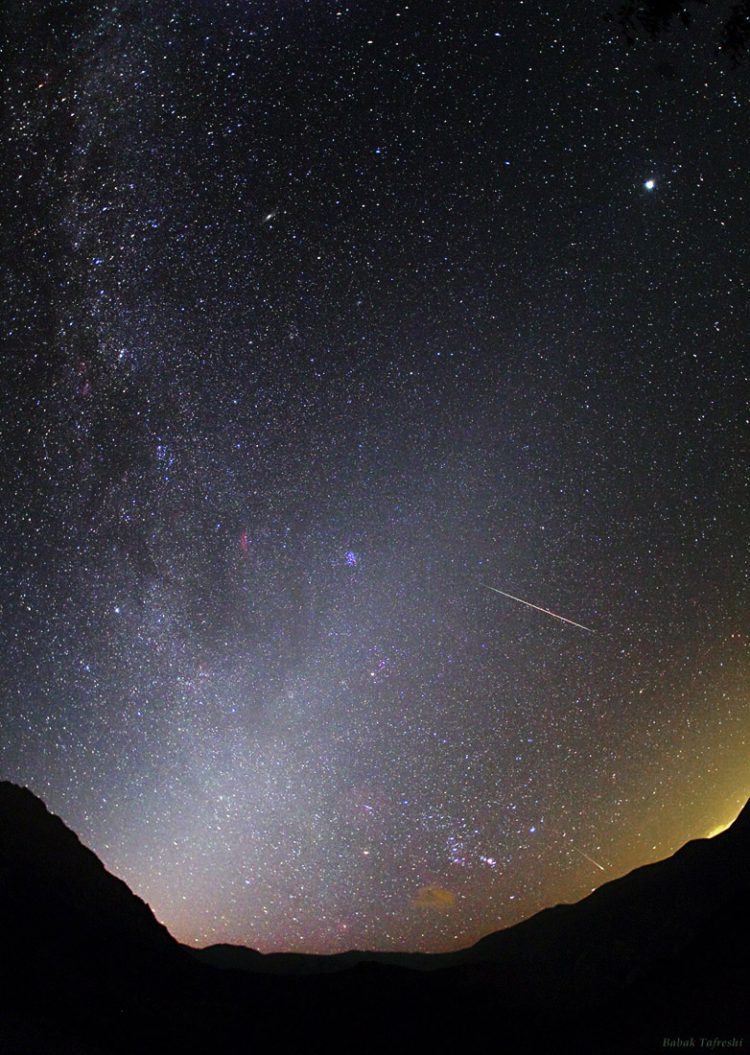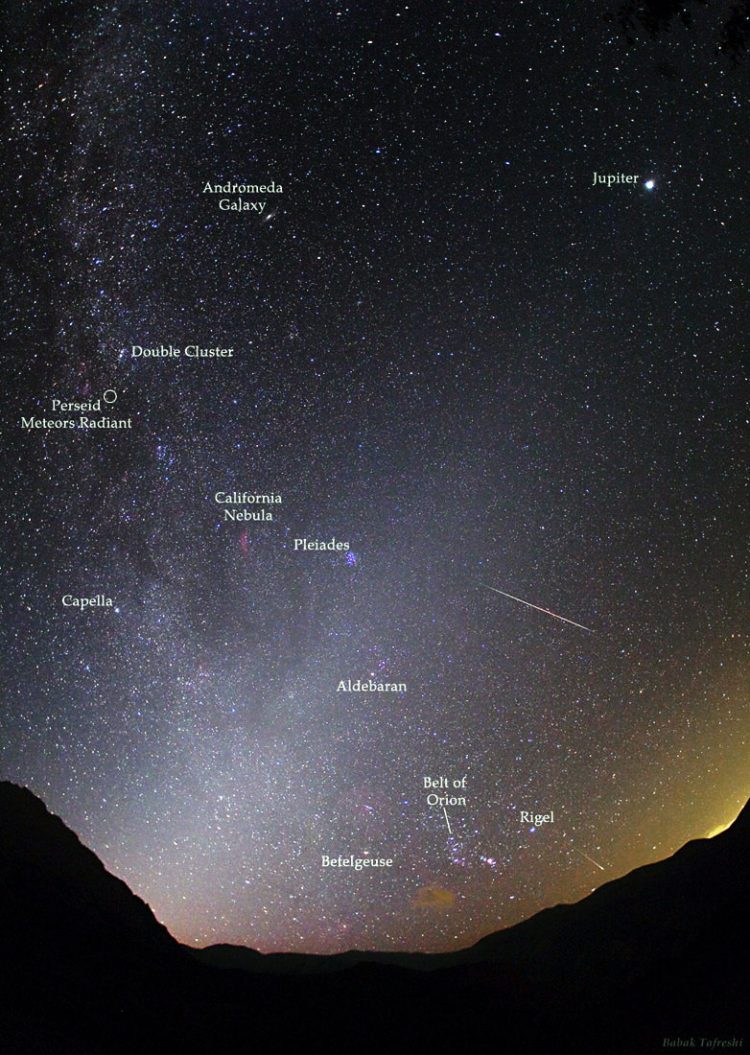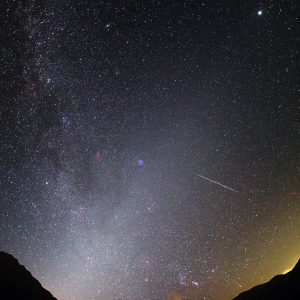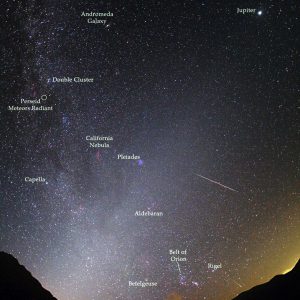Zodiacal Light and Perseid Meteors
Description
As seen on National Geographic News, under dark starry skies the Zodiacal Light appears brighter than the Milky Way in this mid-August morning view. The single exposure wide-angle photo is taken during peak hours of the annual Perseid meteor shower and there are two meteors captured on the right side. Move the slider on the image to recognize the brighter stars and notable objects in this view. Made by the sunlight reflection from dust particles in solar system plane, the zodiacal light is an unusual triangle of light visible along the ecliptic before dawn and after dusk under dark skies, specially in pre-dawn sky of late Summer and early Autumn and just after dusk in late winter and early spring (considered for northern hemisphere and opposite for the southern viewers). Zodiacal light is so bright at those mentioned time of year because the dust band is oriented nearly vertical at sunrise or sunset, so that the thick air near the horizon does not block it out. © Babak Tafreshi




comments (4)
That’s amazing dear Baabak…
August 18, 2010 at 1:14 amI had never seen such a stary night before… really enjoyed it!
we proud you MR babak
August 24, 2010 at 7:50 amthis is beautiful sky
it’s wonderful.I proud you mr babak.
August 27, 2010 at 5:18 pmI love this part of sky because it is so nice and your ability create fantastic photo!
August 28, 2010 at 10:29 am